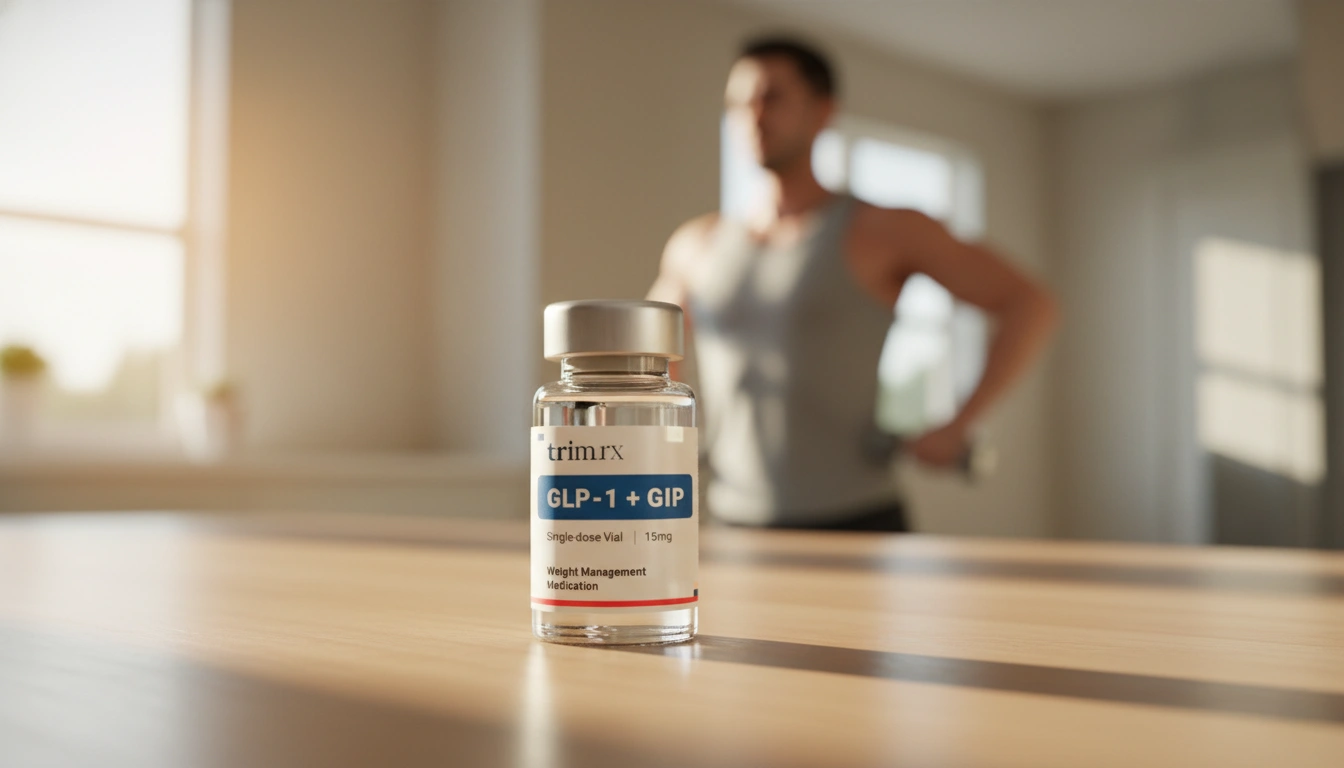Understanding the Side Effects of GLP-1 Medications

Introduction
Did you know that approximately 42% of American adults are considered to be living with obesity? As the prevalence of obesity continues to rise, more individuals are seeking effective weight management solutions. One class of medications that has gained attention in recent years is glucagon-like peptide-1 (GLP-1) agonists, which not only assist in blood sugar control for those with Type 2 diabetes but also promote weight loss. However, with any medication, understanding the potential side effects is crucial for informed decision-making.
In this blog post, we will delve into the various side effects associated with GLP-1 medications. We aim to provide you with a comprehensive overview of these drugs, their mechanisms of action, and the common and rare side effects that may arise during their use. By the end of this post, you will have a deeper understanding of what GLP-1 medications entail, helping you navigate your weight loss journey more effectively.
At TrimRx, our commitment to promoting healthier lifestyles is paramount. We believe in merging cutting-edge telehealth innovations with effective weight loss solutions. Our personalized weight loss programs, which include GLP-1 medications, are designed to be both safe and effective, ensuring that each individual’s unique journey towards health is respected.
In this article, we will cover the following topics:
- What are GLP-1 medications?
- How do GLP-1 medications work?
- Common side effects of GLP-1 medications
- Rare but serious side effects
- Managing side effects
- Conclusion and next steps
Let’s embark on this informative journey to better understand GLP-1 medications and their side effects.
What Are GLP-1 Medications?
GLP-1 medications are a class of drugs primarily used to treat Type 2 diabetes and, more recently, for weight management. These medications mimic the action of the naturally occurring hormone GLP-1 (glucagon-like peptide-1), which plays a critical role in glucose metabolism. The first GLP-1 agonist, exenatide, was approved by the FDA in 2005, and since then, several others have emerged, including semaglutide (Ozempic® and Wegovy®) and liraglutide (Saxenda®).
Types of GLP-1 Medications
- Exenatide (Byetta, Bydureon): Administered via injection, exenatide was one of the first GLP-1 medications introduced.
- Liraglutide (Saxenda, Victoza): This medication is available as an injection and is prescribed for both weight loss and diabetes management.
- Semaglutide (Ozempic, Wegovy): Semaglutide has gained popularity for its effectiveness in weight loss and is available in both injectable and oral forms.
- Tirzepatide (Mounjaro): A newer dual-action medication that targets both GLP-1 and GIP receptors, enhancing its efficacy for glucose control and weight loss.
Indications for Use
GLP-1 medications are primarily prescribed for individuals with Type 2 diabetes who have not achieved adequate glycemic control with other treatments. Additionally, they are indicated for weight management in individuals with obesity or overweight conditions, particularly when weight loss can improve associated health conditions.
How Do GLP-1 Medications Work?
GLP-1 medications work by mimicking the effects of the natural GLP-1 hormone, which is released in response to food intake. The mechanism of action includes several key processes:
-
Stimulating Insulin Secretion: These medications enhance the secretion of insulin from the pancreas when blood sugar levels are elevated, helping to lower glucose levels in the bloodstream.
-
Inhibiting Glucagon Release: GLP-1 medications decrease the secretion of glucagon, a hormone that raises blood sugar levels, thereby contributing to better overall glucose control.
-
Slowing Gastric Emptying: By slowing the rate at which food exits the stomach, GLP-1 medications promote a feeling of fullness, which can lead to decreased food intake and weight loss.
-
Reducing Appetite: These medications also act on the brain to reduce appetite, making it easier for individuals to adhere to calorie-restricted diets.
Common Side Effects of GLP-1 Medications
While GLP-1 medications are generally well-tolerated, they can cause certain side effects. Most side effects are mild to moderate and often improve over time as the body adjusts to the medication. Common side effects include:
-
Gastrointestinal Issues: Many individuals experience nausea, vomiting, diarrhea, or constipation when starting GLP-1 medications. These symptoms are usually temporary and tend to lessen with continued use.
-
Injection Site Reactions: When administered via injection, some people may experience redness, swelling, or itching at the injection site.
-
Headache: This can occasionally occur as the body adapts to the medication.
-
Fatigue: Some users report feeling more tired than usual, especially during the initial weeks of treatment.
-
Dizziness: A sensation of lightheadedness may occur, particularly when standing up quickly.
It’s important to remember that while these side effects can be uncomfortable, they often decrease as treatment continues. If you experience persistent or severe symptoms, we recommend discussing them with your healthcare provider.
Managing Common Side Effects
To mitigate common side effects, we suggest:
-
Starting with a Low Dose: If you are new to GLP-1 medications, starting with a lower dose and gradually increasing it can help your body adjust more comfortably.
-
Hydration: Drinking plenty of fluids can help alleviate gastrointestinal symptoms and prevent dehydration.
-
Dietary Adjustments: Eating smaller, more frequent meals can help manage nausea and improve overall comfort during treatment.
-
Consulting with Healthcare Providers: Regular check-ins with a healthcare professional can provide personalized guidance and adjustments based on your experience.
Rare but Serious Side Effects
Although serious side effects are uncommon, it’s essential to be aware of them. Some of these rarer side effects may include:
-
Pancreatitis: Inflammation of the pancreas can occur, presenting as severe abdominal pain that may radiate to the back. If you experience this symptom, it’s crucial to seek medical attention immediately.
-
Kidney Problems: There have been reports of acute kidney injury in some patients, particularly those who experience severe gastrointestinal symptoms leading to dehydration.
-
Gallbladder Disease: Some studies suggest an increased risk of gallbladder disease, including gallstones, particularly in individuals who are overweight.
-
Thyroid Tumors: Animal studies have indicated a possible link between GLP-1 medications and thyroid tumors, although this has not been conclusively established in humans. Regular monitoring and discussions with your healthcare provider can help mitigate this risk.
-
Severe Allergic Reactions: Although rare, some individuals may experience anaphylactic reactions to GLP-1 medications. Symptoms may include difficulty breathing, swelling of the face or throat, and severe skin reactions. If you notice these symptoms, seek emergency assistance.
Managing Rare Side Effects
Managing the risk of rare side effects involves:
-
Regular Monitoring: Routine follow-ups with your healthcare provider can help identify any potential issues early.
-
Being Aware of Symptoms: Knowing the signs of serious side effects can empower you to seek timely medical advice.
-
Hydration and Nutrition: Maintaining good hydration and a balanced diet can support overall health and mitigate the risk of kidney and gallbladder issues.
Conclusion and Next Steps
GLP-1 medications represent a promising option for individuals seeking to manage Type 2 diabetes and achieve weight loss. Understanding their potential side effects is a crucial step in making informed health decisions. At TrimRx, we emphasize personalized care and are dedicated to helping you navigate your weight loss journey safely and effectively.
If you’re considering GLP-1 medications or are currently using them, we encourage you to take our free assessment quiz to see if you qualify for our personalized weight loss programs. We offer a comprehensive service that includes doctor consultations, medication, lab work, unlimited support, and shipping, all designed to empower you on your journey to better health.
Additionally, to support your weight loss efforts, consider our GLP-1 Daily Support and Weight Loss Boost supplements, which are available without the need for an assessment quiz. You can find more information about these products by visiting the following links:
We are here to support you every step of the way, combining medical science with empathetic care to help you achieve your health goals.
FAQ
What are GLP-1 medications used for?
GLP-1 medications are primarily used to manage Type 2 diabetes and promote weight loss in individuals with obesity or overweight conditions.
What are the most common side effects of GLP-1 medications?
Common side effects include gastrointestinal issues such as nausea, vomiting, diarrhea, and constipation, as well as injection site reactions and headaches.
Are there serious side effects associated with GLP-1 medications?
Yes, while rare, serious side effects can include pancreatitis, kidney problems, gallbladder disease, thyroid tumors, and severe allergic reactions.
How can I manage the side effects of GLP-1 medications?
Starting with a lower dose, staying hydrated, making dietary adjustments, and maintaining regular communication with your healthcare provider can help manage side effects effectively.
Can GLP-1 medications be used for weight loss in individuals without diabetes?
Certain GLP-1 medications are approved for weight management in individuals with obesity or overweight conditions, particularly when weight loss can improve associated health issues.
Where can I find more support for my weight loss journey?
At TrimRx, we offer personalized weight loss programs, including access to GLP-1 medications and supportive supplements. You can take our free assessment quiz to get started.
By understanding the benefits and potential side effects of GLP-1 medications, you can make informed choices that align with your health goals. Let’s work together towards a healthier future!

Transforming Lives, One Step at a Time
Keep reading
Vitamin B12 and GLP-1 Medications: What to Know
GLP-1 medications can lower B12 absorption and intake; learn symptoms, food sources, supplement options, and how to monitor levels.
Semaglutide Injection Site Reactions: What To Know
Learn why semaglutide injections can cause redness, swelling or nodules, how to prevent and treat them, and when to seek medical care.
TrimRx vs Friday’s
Compare TrimRx and Friday’s telehealth GLP-1 weight-loss programs: pricing, medical support, coaching, delivery, and which fits your needs.



